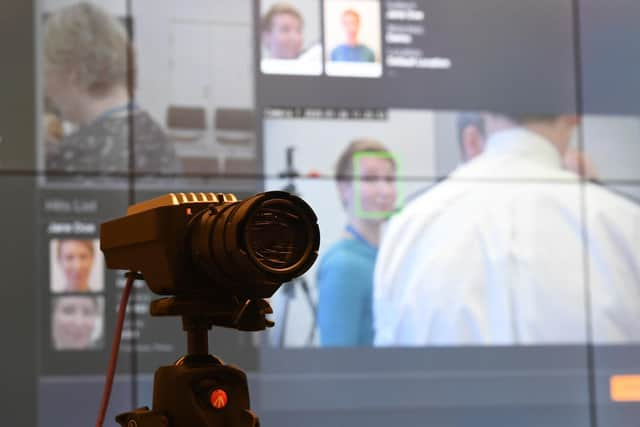Police use of facial recognition software risks unintended consequences: Alan Billings
There are now something in the region of five million surveillance cameras across the country, mainly operated by local authorities. London alone has 942,000. Just before Christmas, I sat in a newly commissioned CCTV van in Wombwell Park where two council operatives were able to bring up, on half a dozen screens, live pictures from 165 cameras across Barnsley!
Previously, I have been in the CCTV control room in Doncaster and watched, on multiple screens, people moving about in the town centre, seeing how the cameras can be controlled remotely to focus on particular individuals whose behaviour is causing concern. While I was there, we homed in on someone who was begging aggressively and were able to contact a police officer to have him cautioned and moved on.
Advertisement
Hide AdAdvertisement
Hide AdBut the technology that will come to the fore this year for policing will be facial recognition software (FR). This will enable the police to match the facial images they capture day-to-day on cameras or mobile phones with data banks of existing photographs, in order to identify suspects.


There is a lively debate going on among ministers, the police and police and crime commissioners (PCCs) about what data bases should be available to the police. The Criminal Justice Bill going through Parliament will allow the police to run searches on millions of driving licence holders. The policing minister has suggested going further and allowing access to passport data as well. Between them, this would capture photographic images of almost everyone in the country.
At the moment there has been little urgent public debate around this. When it happens, we are likely to divide into two camps. There will be those who say, if this helps the police to identify criminals and we have nothing to hide, then we have nothing to fear. On the other hand, there will be those who will feel that this is a step too far, an invasion and erosion of privacy and a move towards the Big Brother state.
FR is not new. There are two types. Live facial recognition is where the police can compare in real time an image of someone captured by a live camera with an existing police watchlist. These watchlists could be, for example, photographs of wanted offenders or missing persons. Then there is retrospective facial recognition where the matching happens after the fact – when a burglar or car thief, say, is caught on CCTV.
Advertisement
Hide AdAdvertisement
Hide AdIf we look at figures supplied by the Met, between 2020 and 2023, 34 people were apprehended as a result of live FR. And in October 2023, 149 thieves were identified as a result of retrospective FR. Many of the bigger retail stores, such as the Co-op, are already using FR themselves to stop known thieves coming into their shops.
There are clear benefits to policing from the use of FR. But, as with all technology, and especially as we begin to use it more widely and use more data bases, there are questions and risks.
Although the technology is far more reliable than it once was, it is still possible to identify someone incorrectly. A study by Essex University Human Rights Centre found the technology was inaccurate in almost 80 per cent of cases they reviewed in the Met in 2019 – though the technology has improved immeasurably since then. There have been particular issues with the identification of black female faces.
It should be said that there have been no unsuccessful prosecutions in the UK so far as a result of FR; though that has not been the case in the USA – so we have been warned.
Advertisement
Hide AdAdvertisement
Hide AdThere are clearly enormous potential benefits from FR for policing, especially as the technology improves further and enables successful matching in almost every case. The Criminal Justice Bill would allow police access to biometric data for many millions of people when seeking to identify suspects across a wide range of minor and major offences. That is an invasion of privacy that needs careful consideration. We can see the benefits, but are there unintended consequences that we need to think about?
For this reason, I have decided to strengthen the Independent Ethics Panel (IEP) by appointing a new member who has expertise in this area.
Dr Jamie Grace is a lecturer in public law at Sheffield Hallam University who has specialised in the use of technology in policing. The IEP has already produced some guidelines and given some preliminary thought to new technology – which is developing very fast. They will now help me and South Yorkshire police think further about the use of new technology, beginning with FR, so that we can have the benefits while understanding and mitigating the risks.
Alan Billings is South Yorkshire Police and Crime Commissioner
Comment Guidelines
National World encourages reader discussion on our stories. User feedback, insights and back-and-forth exchanges add a rich layer of context to reporting. Please review our Community Guidelines before commenting.